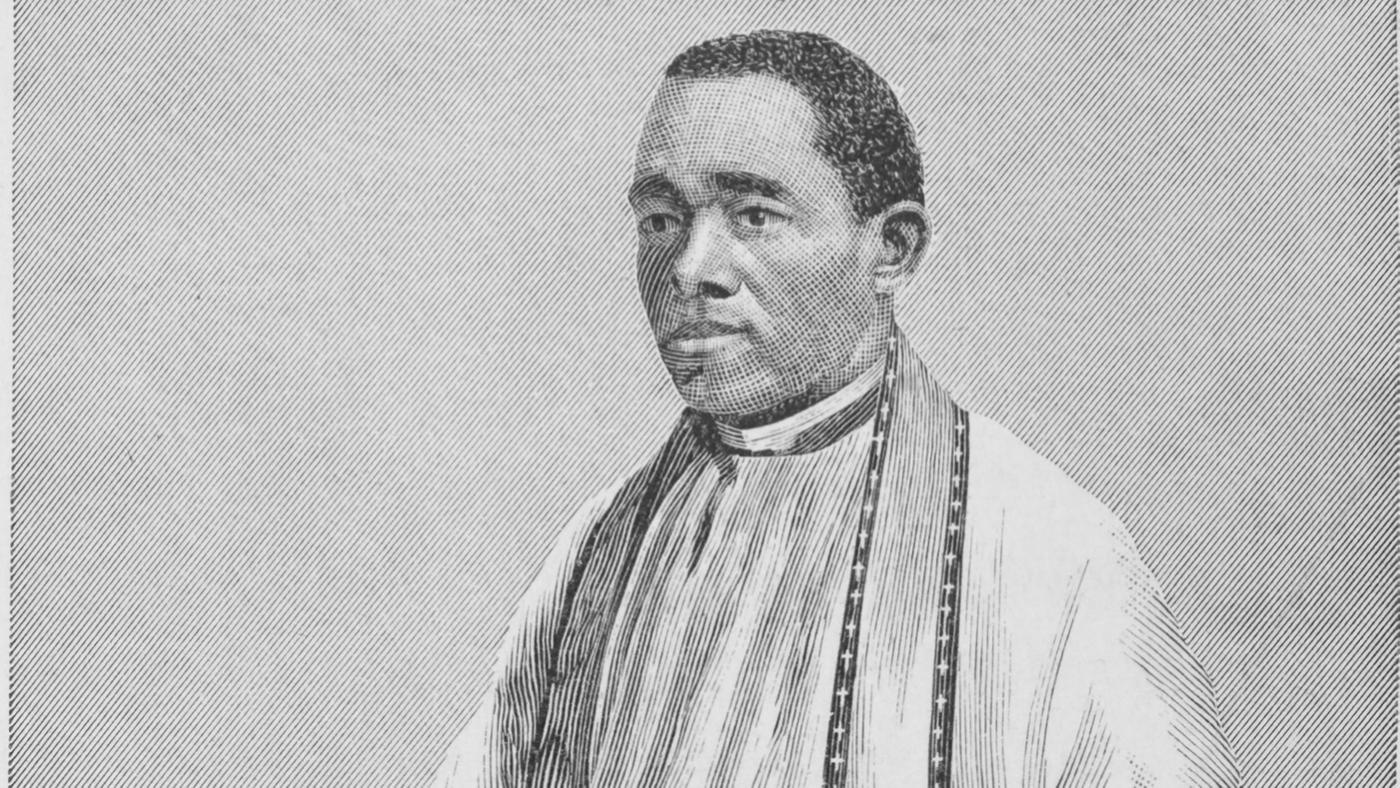The First Black Catholic Priest—a Candidate for Sainthood—and His Importance to Chicago
Daniel Hautzinger
February 24, 2023

To become a priest, Augustus Tolton had to leave his homeland, cross an ocean, and study in a foreign country. No Catholic seminary in the United States would admit a Black man in the 1880s.
He had already fled his birthplace in order to be free, rowing across the Mississippi River with his mother and two siblings to escape slavery-defending Missouri for the Union state of Illinois during the Civil War. And yet he returned to the United States to minister as a priest in both Quincy, Illinois and Chicago, where he established the first standalone Black Catholic church in the city.
Tolton was the first African American Catholic priest to be recognized as a Black man. Now he is a candidate for sainthood, having been elevated to “Venerable” by Pope Francis in 2019. If two miracles are attributed to him, he will be canonized and become the first African American Catholic saint.
Tolton was born into slavery in 1854 on a plantation in south central Missouri, which had been admitted to the United States as a slave state some thirty years earlier. Tolton’s parents were both baptized Catholics who were eventually granted permission to marry by their Catholic owners. Tolton’s owner ordered his slaves to be baptized and receive religious education. Tolton was named after the influential early theologian St. Augustine, who was a Roman North African.
Tolton’s father escaped from slavery and joined the Union Army after the Civil War broke out in 1861. Missouri was nominally neutral in the war but was recognized by both the Union and the Confederacy, and remained a slave state. With the help of the Union Army, Tolton and his family escaped some 200 miles to the free state of Illinois, where they settled just over the Mississippi River in Quincy.
The city was growing rapidly at the time, on its way to becoming Illinois’ second-largest city. Priests there supported Tolton and tutored him privately before encouraging him to travel to Rome to become a priest. He was ordained in 1886.
Other African Americans predated Tolton as officially recognized clergy in the United States: for instance, Absalom Jones became the first African American Episcopal priest in 1802, while his collaborator Richard Allen founded the African Methodist Episcopal Church in the late eighteenth century. But Tolton was the first Catholic priest known to be Black—James Augustine Healy had been ordained in 1854 and became a bishop, but Healy identified as white and was light-skinned, and was therefore able to pass.
While it was expected that Tolton would go to Africa as a Catholic missionary upon his ordination, instead he was sent back to Quincy. A white priest there convinced the local bishop to bar Tolton from ministering to white people, according to The New York Times, but Tolton nonetheless drew some white members to his congregation, according to the Encyclopedia Britannica.
After three years in Quincy, Tolton moved to Chicago in 1889 at the behest of a Black Catholic charitable society called the St. Augustine Society. The organization wanted Tolton to lead a Black Catholic congregation in Chicago, according to the Encyclopedia Britannica. An African American parish, Chicago’s first, had been established on a lower level of St. Mary’s Church in 1882, according to the Archdiocese of Chicago. Tolton took charge of that congregation and began raising funds to build them a permanent home.
Several years after moving to Chicago, he dedicated St. Monica’s at 36th Street and Dearborn Street in Bronzeville. The church building wasn’t entirely completed when it was dedicated in early 1894, but it had been built by a Black contractor and was prepared to serve the approximately 140 Black Catholic families that the Chicago Tribune estimated to be in Chicago, around 50 of whom lived near the new church.
Tolton died of heat stroke a few years after the opening of St. Monica’s, in 1897. “Father Tolton was one of the foremost clergymen of the Catholic Church in this part of the country, and was remarkably popular,” wrote the Tribune upon his passing.
It took until the 2000s, however, for any campaign to canonize Tolton as a saint to take off. In 2010, Chicago’s Francis Cardinal George initiated the process, leading to Tolton’s elevation to Venerable in 2019. Five other African Americans are currently being considered for sainthood, according to U.S. Catholic, and Tolton has progressed most recently.
Only four percent of Catholics in the U.S. are Black, according to a 2022 Pew Research Center survey, and six percent of all Black adults are Catholic. Chicago has been a significant center of Black Catholics over the years, including back when Tolton helped construct the city’s first Black Catholic church. In 1975, Chicago was home to 80,000 Black Catholics, the second-largest population in the U.S., according to Smithsonian Magazine. Black Catholic activists worked with both Jesse Jackson’s Operation Breadbasket and Fred Hampton’s Black Panthers on behalf of civil and economic rights.
A Catholic school in Greater Grand Crossing on Chicago’s South Side is named after Tolton, and is located only a mile and a half or so away from one of the country’s more remarkable Black Catholic churches. St. Benedict the African Roman Catholic Church in Englewood, constructed in 1989, is a unique building reflective of the community that built it, with stained glass depicting Black people and hand-carved wooden features inspired by West Africa, instead of Europe, as in most churches. The church is named after a former slave in Italy, who became the first African to be canonized through the regular canonical process, in 1807. St. Benedict the African is patron saint of African Americans and has several historic churches in the U.S. named after him, despite never having set foot in the country. If Father Augustus Tolton is canonized, he could make a more fitting patron.







